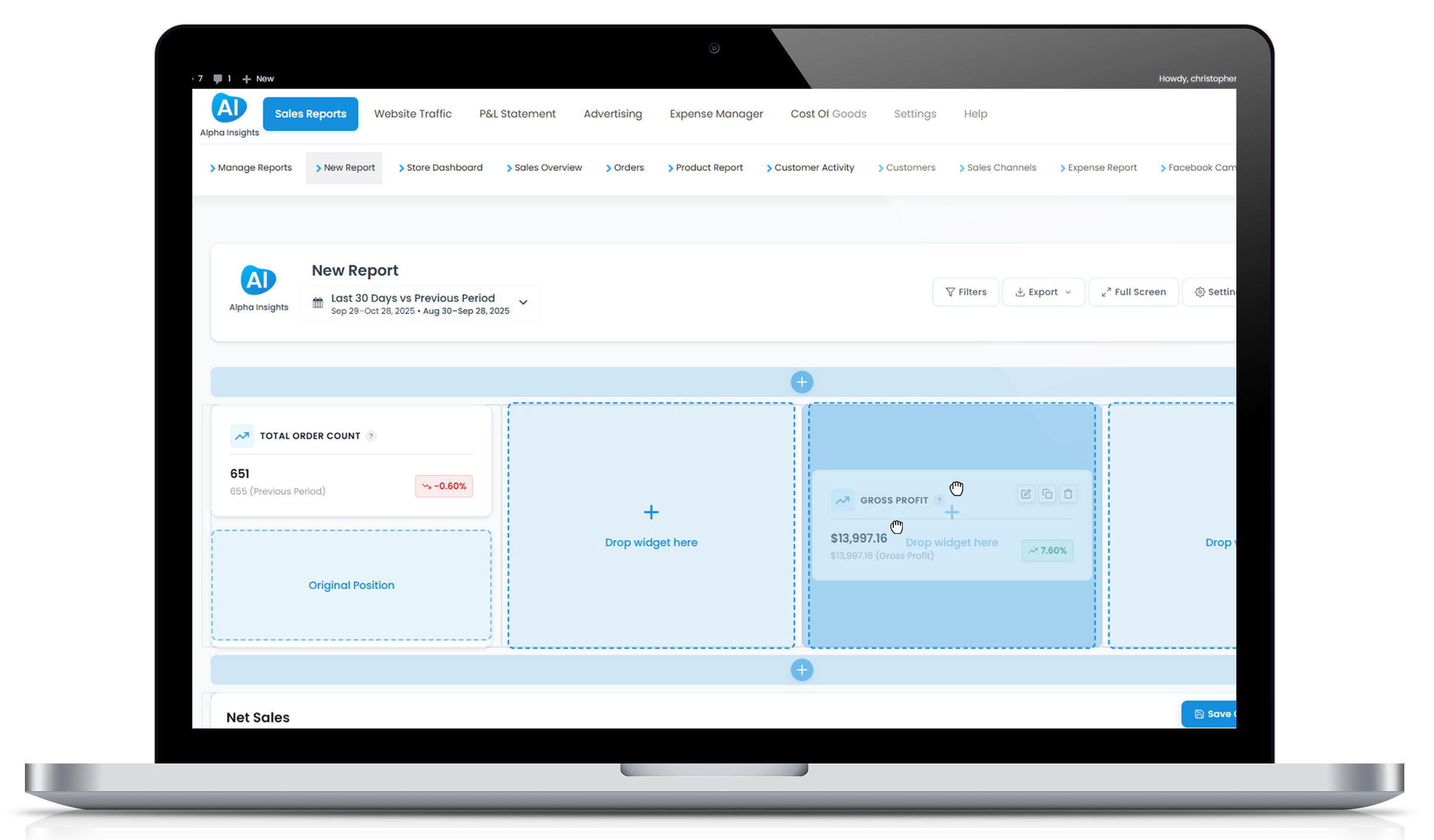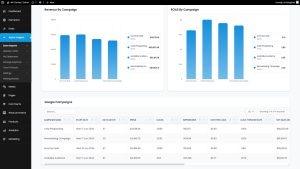How to Track Product Profitability in WooCommerce
Sales numbers can look great on the surface, but are your best-selling products actually making you money?
Many WooCommerce store owners focus entirely on revenue, without realizing that some products barely break even (or worse, lose money). To run a truly profitable store, you need to track product profitability—not just sales volume.
In this guide, we’ll show you how to accurately measure product profitability in WooCommerce, avoid hidden costs, and make smarter decisions using tools like Alpha Insights.
Why Tracking Product Profitability Matters
Would you rather sell 1,000 products with thin margins or 500 products with great profitability? Many store owners don’t have a clear answer—because they aren’t tracking product-level profits correctly.
By monitoring product profitability, you can:
- Ensure you’re pricing products for maximum profit, not just maximum sales.
- Identify high-profit vs. low-profit products in your store.
- Make informed decisions on marketing, discounts, and inventory.
- Reduce costly mistakes that drain your margins.
Now, let’s break down the steps to track product profitability in WooCommerce.
Step 1: Calculate the True Cost of Each Product
To determine profitability, you first need to calculate the actual cost of each product beyond just the price of goods.
What Should Be Included in Product Costs?
- Cost of Goods Sold (COGS): The amount you pay suppliers for each unit.
- Transaction Fees: Payment processor fees (PayPal, Stripe, etc.).
- Shipping & Fulfillment: Carrier costs, packaging, and warehouse storage.
- Marketing Costs: Paid ad spend related to each product.
- Returns & Refunds: The cost of refunded or replaced products.
Why It Matters: A product that seems profitable might actually be losing money when these extra costs pile up.
How to Track Costs Accurately
- Keep supplier invoices and update product costs regularly.
- Track fulfillment expenses inside WooCommerce.
- Monitor refund rates and adjust future projections.
For a fully automated way to calculate product costs and profit in WooCommerce, check out Alpha Insights.
Step 2: Understand Gross Profit vs. Net Profit
Not all profits are created equal. There’s a difference between gross profit and net profit, and you need to track both.
How to Calculate Product-Level Profitability
- Gross Profit = Selling Price – Cost of Goods Sold (COGS)
- Net Profit = Gross Profit – All Other Expenses (marketing, refunds, etc.)
Example: If you sell a product for $50 and your COGS is $20, the gross profit is $30. But if fulfillment costs, transaction fees, and marketing add up to $10 per sale, your net profit is really $20 per unit.
Why This Matters
- Gross Profit Helps You Compare Product Margins: Which products have the best unit profitability?
- Net Profit Helps You Identify True Store Profitability: Which products are actually worth selling?
Step 3: Analyze Product Profitability by Category
Not all product categories perform the same. Some generate consistent profits, while others might be dragging your margins down.
How to Measure Category Profitability
- Segment your products by category.
- Compare profitability by category instead of just individual product sales.
- Identify seasonal trends in profitability.
For example, if you sell apparel, you might find that high-end jackets have much higher profit margins than t-shirts. That insight can help you adjust inventory and marketing spend accordingly.
Step 4: Track Your Best and Worst Products Over Time
Profitability isn’t static—it changes over time. Tracking product performance long-term helps identify trends and avoid issues.
What to Watch For:
- Are your most profitable products staying profitable?
- Are shipping, supplier, or ad costs eating into margins?
- Are discounts or promotions affecting profitability?
By monitoring trends, you can spot problems before they cut into your bottom line.
Step 5: Use WooCommerce Reports (or a Better Alternative)
WooCommerce provides basic sales reports, but it lacks deep profitability insights.
Limitations of WooCommerce’s Built-In Reports:
- No ability to track product-level expenses.
- No easy way to calculate profit margins automatically.
- No insights into advertising costs vs. revenue.
If you want a better way to track product profitability, Alpha Insights simplifies everything. It automatically calculates product-level and category-level profitability, so you can see exactly where your store is making money.
Step 6: Make Data-Driven Decisions for Higher Profits
Once you’re tracking profitability the right way, you can start making smarter decisions.
How to Use Profit Data Effectively
- Eliminate or adjust unprofitable products—Don’t waste time on products with razor-thin margins.
- Increase marketing on high-margin products—Focus ads and promotions on your most profitable items.
- Set better promotions & discounts—Avoid price cuts on low-margin products.
Final Thoughts: Profitability Beats Sales Volume
Running a successful WooCommerce store isn’t just about increasing sales—it’s about increasing profitable sales.
By tracking product profitability, adjusting pricing, and focusing on high-margin products, you can grow your business without unnecessary costs.
Want an easier way to track profitability in WooCommerce? Alpha Insights does all the heavy lifting for you, automatically tracking costs, margins, and profitability trends.
Start optimizing your WooCommerce store the smart way—get Alpha Insights today.





